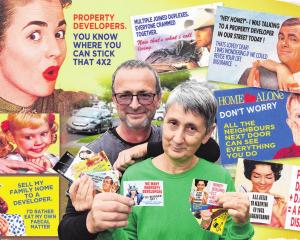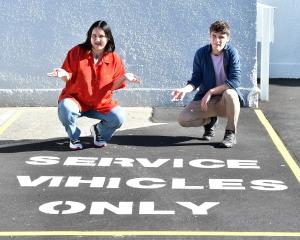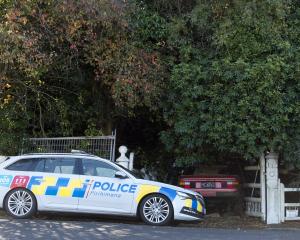Otago motorists are urged to take special care around schools as pupils return to class this week.
The school year has begun for many and children throughout the region will be beginning their first term for 2014 over the coming days.
Police have reminded all motorists to be aware of increased activity around schools.
Dunedin road policing manager Senior Sergeant Phil McDouall said a road policing campaign would target excessive speed around schools and on school bus routes until February 15.
''Our aim is to prevent fatal and injury crashes involving children around schools,'' he said.
Snr Sgt McDouall said young children were not always aware of everything happening around them, and could have difficulty judging the speed of moving vehicles.
As well as primary-aged children walking and cycling to school, many teenagers were learning to drive or driving to school for the first time, and so it was essential for all road users to be vigilant, he said.
National road policing manager Superintendent Carey Griffiths said children were the most vulnerable road users and they needed to be safeguarded as traffic around schools returned to normal levels.
''New pedestrians and cyclists are still building confidence and don't have the ability to anticipate dangerous situations.''
He said there would be congestion around schools while people got back into routines dropping off and picking up children.
Therefore, it was important for all motorists to be aware of their speed and watch closely for children on and around roads.
''This means sticking to the speed limit, giving cyclists plenty of room and travelling at no more than 20kmh past a stationary school bus.''
Motorists were also reminded about the permanent reduced 4kmh speed tolerance around schools.
''Children can be unpredictable, so motorists need to be well prepared to stop safely in and around school zones, Supt Griffiths said.
''Returning to school is often an exciting time for kids, as they rush to catch up with friends, so they can be easily distracted and may not be paying as much attention to their surroundings.''
Parents were encouraged to re-establish safe walking and cycling habits with children, even for familiar routes.
Supt Griffiths urged all drivers to be considerate and sensible by not parking on yellow lines, in bus zones or where it was unsafe to drop children off.
Motorways and other main routes might also experience increased traffic congestion as the holidays came to an end, he said.
In Dunedin, since 2009, there had been 295 crashes within 250m of schools, in the 90 minutes after 7.30am and 2.30pm, between February and December.
Almost 40 of those involved children and teenagers, all involved injury, and 16 involved pedestrians.
For the same period there were 31 such crashes in Waitaki and nine in Clutha.
Safety around schools
• Be alert for children. They can be unpredictable.
• Remember the permanent 4kmh speed threshold.
• Slow down and stop at all intersections.
• Look for clues such as crossing guards, bicycles and playgrounds, indicating children could be in the area.
• Scan between parked cars and other objects for signs that children could dart into the road.
• Stop for school buses loading and unloading pupils. Allow extra time to get to work or school.
• Young children should not walk to and from school alone.
• Involve children in selecting the safest route to school and home.
• Practise the route so children become familiar with it.
• Teach children to stop, listen and look for approaching and turning vehicles.
• Discuss the use of crossings and why some corners are safer to cross at.
• Discuss the meaning of traffic signals and markings.
• Teach children to co-operate with police, school safety patrollers and adult crossing guards.
• Ensure children get in and out of vehicles on the footpath side.
• Park away from yellow lines, intersections and driveways.
• Don't double park outside a school. Park further away if necessary and walk with children to and from the school.
• Drive slowly outside schools and be prepared to stop in case children dart out.
• Take extra care on wet days.












